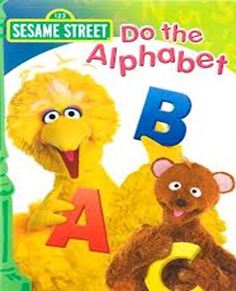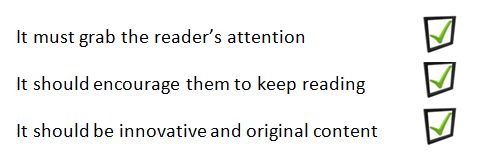Creativity is vital in content production. If your content isn’t creative, nobody is going to want to read it, and more importantly, nobody is going to want to host it!
What is creativity? Many people seem to think that using infographic templates, picture collages, style guides etc. is creative. This is what I call the “magic trick”, flash your audience with something colourful and eye catching along with some text and thinking that they can easily be fooled into thinking “wow that’s so creative”. This is not creativity.
There is very little true creativity in using tools such as Polyvore and gimp. I use these services from time to time, and they are essential in certain markets, primarily when writing for the fashion industry. But true creativity requires original thought! New concepts, ideas, angles and approaches! Not just recycling images in a pretty way.
Every now and then I come across a piece of content that grabs my attention and follows this rule of thumb;
- This blogger went the extra mile to showcase the positive effects of Photoshop. The blogger was smart and creative in his approach; taking a subject matter that is of interest to a mass audience, using before and after shots to showcase Photoshops versatility; 60 Useful Photoshop Actions to Enhance your Photos for Free
- This post takes creativity to the next level and illustrates all my points above, by creating a robot tournament between the most iconic robots of our time; Robot Knockout Tournament
True creativity is taking a concept and making it your own, applying your own thoughts to that subject matter by approaching it from your own creative angle. Simply put; making any given topic interesting.
To illustrate this I’m going to take the subject matter “a guide to creating quality content” and express it as the first 10 letters in the alphabet. By doing this, I’m ticking the most important boxes of creative content;
The Creative Content Alphabet
A
Approach; before creating content its important to analyse the market. Ask yourself what people want to know more about, whats topical in this market, look at forums and other blogs in relevant areas to see what people are interested in. Remember; writing a blog post is completely different to writing an article. You are not reporting; the aim is to comment – give an informed opinion in an enlightening and constructive way.
B
Beginning; the beginning is, by far, the most important part of any piece of content. Idea generation, coming up with a title and the opening sentence/ paragraph/image/scene are the most important parts of the post! Its essential to grab the attention of the reader and set the tone for the rest of the piece. Journalists will tell you that the most important part of any given article is the first four words – in the time it takes to read those words, a reader will have decided whether or not to carry on through the rest of the article!
C
Critical; be critically analytical of your work. Look back on your content when its completed through non-biased eyes. Ask yourself; would I really have read/viewed this? Doing this will help you evaluate your strengths and weaknesses as a content producer, and will help you to improve for your next piece. For example; I’d be the first to admit my main down fall is grammar and spelling, so I ask someone who’s good at it to look over my work!
D
Delivery; once again this is highly dependent on the source or market your writing for. Essentially your delivery is how you want to portray the overall message of the piece. Your use of language, tone, style, uses of imagery etc. are all contributing factors to how you want to deliver your message. The key to great delivery is being aware of the audience you are writing for and tailoring your content accordingly.
E
Engaging; does your content engage the attention of the reader? A truly creative and engaging bit of content will results in social shares and comments.
F
Framework; the framework of your content is often dictated by the blog or website i.e. word count, number of images allowed etc. But here’s a tip; make sure there is a flow to your writing – this can be achieved by breaking up your content with sub headings. This is extremely useful, especially for people who aren’t confident in their writing ability. Have a set format such as beginning, middle and end – achieved by breaking the content into three different sub headings. However, if you’re confident in your writing, I would veer away from these constraints and let your imagination run free!
G
Guided (no guidance); at the very beginning of the post right down 3 goals of what you want to achieve from the content. I guarantee you if you’ve achieved all of these goals, you’ve done something seriously wrong! In every post I have created that I’m even slightly proud of, I’ve rarely achieved all of my goals! What I’m saying is its good to have a guide at the start but don’t restrict yourself to this plan. Just use it as a starting point to get the creative juices flowing.
H
Holistic; Consider all the aspects of the content you’re producing and the effects it could have – if you’re writing on behalf of someone else or an organisation, think about their ethos before you publish anything.
I
Imagery/infographics; not to contradict myself, but imagery and info graphics can add a lot to a piece of content. I emphasise these must be engaging, unique of good quality. Take The Coca Cola vs. Pepsi infographic as a prime example.
Research and innovation is essential when it comes to info graphics and creating imagery. The phrase “a picture speaks a thousand words” comes to mind. Make all of those words come to life.
With regards adding images to content, I’d advise humour and familiarity much like my Sesame Street image!
J
Joined-up thinking; the resources available on the web are limitless. Make use of them in your research; take notes, bookmark articles that you think you can use; I don’t mean plagiarism, I mean for inspiration. And try to appreciate the fact that by creating new content, you’re adding to those resources! Make sure its a worthy addition!
I hope this post has enlightened you on the ways of the creative mind and helped you in creating quality content of your own. Please feel free to share your thoughts by leaving me a comment below!




